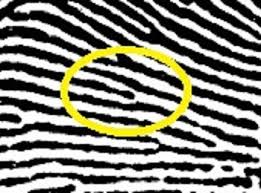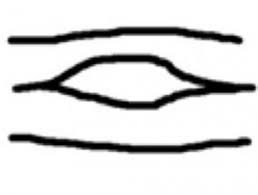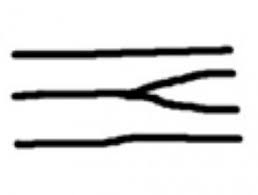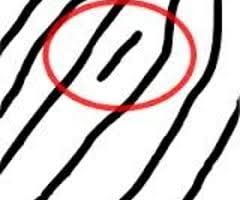Forensics Fingerprinting
1/35
Earn XP
Description and Tags
Name | Mastery | Learn | Test | Matching | Spaced |
|---|
No study sessions yet.
36 Terms
Dactyloscopy
the study of fingerprints
Koala
One of the few mammals that has fingerprints.
Prehistoric uses of fingerprints
Babylon-business transactions
Ancient China- clay seals
Persia - government papers
Sir William James Herschel
noted that fingerprints could prove or disprove identity; believed that all fingerprints were unique to the individual.
Dr. Henry Faulds - 1880
recognized the importance of fingerprints as a means of identification from crime scenes and devised a method of classification as well.
Sir Francis Galton
Father of contemporary fingerprinting; he published his book, "Fingerprints", establishing the individuality and permanence of fingerprints. The book included the first classification system for fingerprints.
First use of fingerprints in a criminal case
Juan Vucetich made the first criminal fingerprint identification. He was able to identify Francisca Rojas (murdered her two sons )
1908
The first official fingerprint card was developed
1911
Fingerprints are first accepted by U.S. courts as a
reliable means of Identification.
Thomas Jennings
the first person to be convicted of murder in the United States based on fingerprint evidence; executed in 1912
Edmond Locard
wrote that if 12 points (Galton's Details) were the same between two fingerprints, it would suffice as a positive identification.
True
True or False: there is "NO" required number
of points necessary for an identification.
To provide a firmer grip and resist slippage
What is the purpose of the ridges that make up a fingerprint?
Loop, Whorl, Arch
The 3 classes of fingerprints
Radial loop
opens toward the thumb
Ulnar loop
opens toward pinky
Class
Is the type of print (Loop, Arch or Whorl) class or individual evidence?
minutiae
The individuality of a fingerprint is not determined by its general shape or pattern, but by the careful study of its ridge characteristics, known as
Definition of Minutiae
characteristics of ridges or patterns
Core
The central pattern in the middle of the print
Delta
A small “up-side-down” V shape that appears within most fingerprint patterns
Type Line
The ridges that diverge (separate) above and below the delta
Patent prints
Usually quite easy to see and may be in blood, ink, grease, oil or some other contaminant on the hands
Plastic prints
Three-dimensional (3-D) in putty, or a similar soft material, that can reproduce the ridges cleanly
Latent Prints
prints left behind from the oil and sweat from your hand; usually invisible to naked eye; referred to as invisible prints
Powders, iodine, ninhydrin, silver nitrate, cyanoacrylate
developing latent prints:
powders
adhere to both water and fatty deposits. Choose a color to contrast the background.
iodine
fumes react with oils and fats to produce a temporary yellow brown reaction.
ninhydrin
reacts with amino acids to produce a purple color.
silver nitrate
reacts with chloride to form silver chloride, a material which turns gray when exposed to light.
cyanoacrylate
“super glue” fumes react with water and other fingerprint constituents to form a hard, whitish deposit.
IAFAS
The Integrated Automated Fingerprint Identification System- This system most commonly compares ridge endings and bifurcations
ridge ending
the point where a ridge ends abruptly

enclosure
Formation where ridge bifurcates and rejoins. to be one in a short distance

bifurcation
Point where a friction ridge forks and becomes two separate ridges.

island
a single friction ridge that begins, continues for a short distance longer than the width, and then ends, disconnected on both ends.
